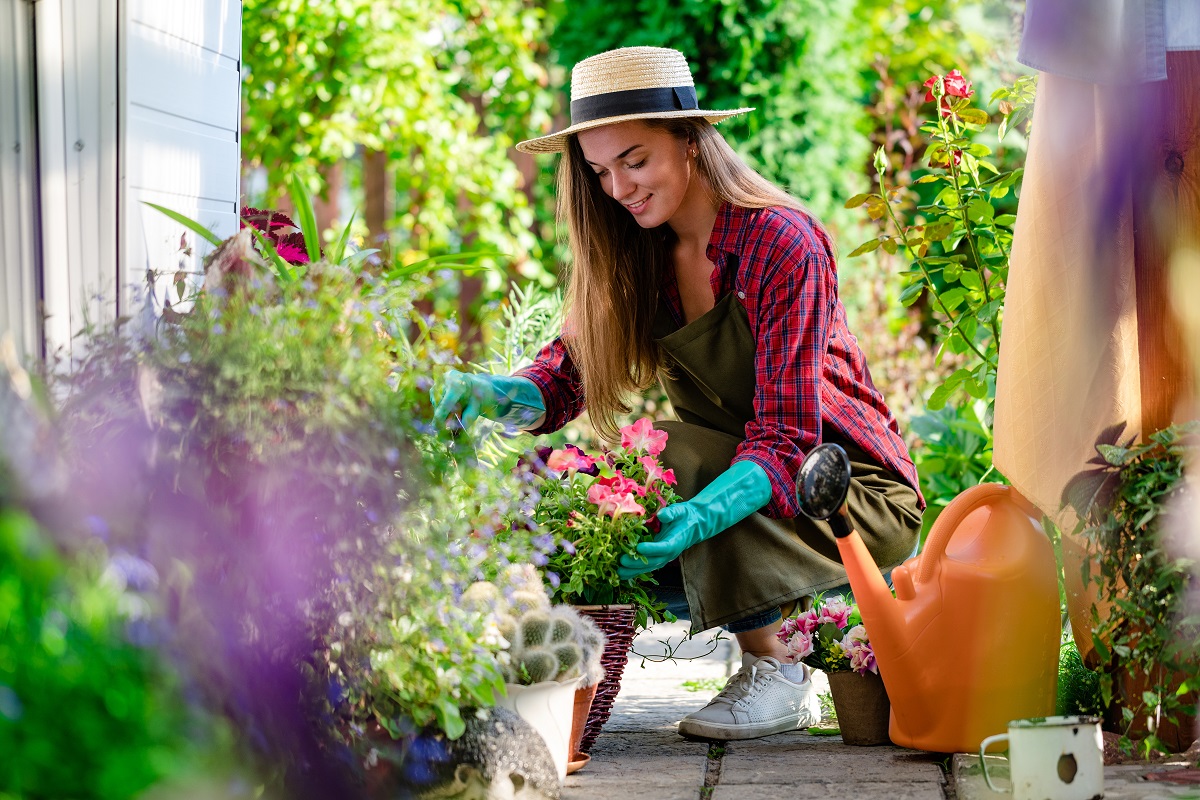Although manicured lawns and clipped hedges look pleasing, there’s just something inviting and carefree about gardens that haven’t been styled and left looking natural. Think of nearly invisible pathways among billowing weeds and grasses, vines climbing over structures, and flowers growing freely everywhere.
As a bonus, birds, butterflies, and other creatures will feel welcome in these kinds of gardens. So if you are looking to embrace the wildness of your garden, below are some key ideas to make it look more untamed and natural.
The Softscape
Seek inspiration from forests, meadows, deserts, or woodlands for your color palette and planting style. Depending on the climate, your garden could look and feel like a desert oasis with low-water greenery or a shady forest hideaway with lots of woodland flowers, shrubs, and ferns.
Either way, ground the look with some evergreen shrubs for some laidback structure and enable smaller shrubs, perennials, and ornamental grasses to spill and overlap into pathways.
The Hardscape
Opt for natural materials like recycled wood, gravel, and local stone for fences, walkways, and walls. Limit the use of manmade garden structures and pick hardscape designs that will enhance your natural garden’s look.
Likewise, in natural gardens, subtle gravel pathways help draw the eye away from walkways and toward your planting beds. Opt for organic curves instead of straight lines and consider softening borders with billowing plants over the edges.
Design Flexible Seating Areas
Do away with built-in seating placed on heavy hardscapes and go with more flexible seating arrangements with tables, chairs, fire pits, or benches that you can easily move around in your garden. This will enable you to choose which spot in your garden is best for outdoor gatherings based on what feels the most appropriate from season to season.
For instance, that canopy from your shade tree is best for summer gatherings, while a certain spot near your wildflowers will be best for catching some late-afternoon sunlight come wintertime.

Leave Certain Areas Wild and Untamed
For instance, shaded areas under huge trees allow leaves to fall and naturally form mulch under them. You could consider planting several native species and then leave some space for weeds and wildflowers to grow naturally.
Say No to Property Borders
That is, besides the actual property borders your land surveyor established to avoid encroachments and neighbor disputes. If you don’t have to corral pets, have issues with animals coming into your garden, and have a vast open space, consider creating seamless transitions zones from the garden and into the open space beyond.
Opt for Plants and Natives that Support Local Wildlife
Native species usually require little maintenance once established. They also offer valuable nesting materials and food sources for native insects and animals. While you can certainly choose other plants that are not native to your region, consider including some native plants to make your garden look more natural. You should also include plants that support wildlife, including penstemons and salvias.
Choose Low-maintenance Perennials that Bloom
Plant flowering perennials in various colors and those that have an informal or loose growth habit. These will instantly bring exuberance to your garden, cover hardscape, and soften the look of edges.
Don’t Forget the Grasses
With their carefree growth habit and soft forms, native and ornamental grasses go very well with untamed and natural gardens. Consider planting different types in several garden beds for movement and texture or covering huge spaces in place of a manicured lawn.
So unleash your garden’s wild side and let your garden grow wild with the tips above without sacrificing style and function.
